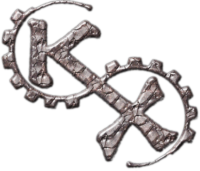Area of Kuskurza containing the main King’s Head Palpate, Tombs, shrines and accesses to the the substructures beneath. The entirety is laced with monumental construction indicating hidden features such as concealed or hidden entrances. This “king’s head” sits atop a large worked platform and is surrounded by monuments encoded to convey detailed information including topographical, technical and spiritual instruction. All of which are assembled into a “sculpture garden” of sorts featuring shrines, causeways and vistas. The code transmitted through shapes and positions reveal entrances to the substructure of tunnels and tombs. All the monumentation is sculpted from olivine basalt using an unknown method that cleaved the stone into the desired shapes. Entering through the dark triangle shaped “doorway” one can find access meant to ascend onto the flat area atop the head and speak from behind the “crown”, which is a triangular shaped palpate.
was successfully added to your cart.

